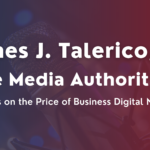Succession is a pivotal moment in a company’s lifecycle. Whether transitioning leadership in a family-owned business, to your current management team or handing over the reins to a strategic buyer, the risk of disruption, due to cultural drift, operational slowdown, or talent loss can be significant.
With deliberate planning, the right leadership mindset, and by remaining agile, however, companies can preserve their core identity and financial performance. Here’s how to ensure that your company’s culture and operational strength remains intact during a leadership succession.
- Start by Defining and Documenting Your Corporate Culture:
Corporate culture includes shared values, behaviors, beliefs, and practices that shape how employees interact and work within an organization. It influences everything from decision-making and communications to employee engagement and customer experience. A strong, positive corporate culture fosters alignment, boosts morale, and drives long-term organizational success. Corporate culture is easy to overlook during succession because it is intangible, but it’s often the glue that holds the company together. Here are three steps you can take to define and document your corporate culture:
- Put the company’s mission, vision, core values, and cultural traits in writing, using real stories or examples that show these values in action;
- Identify and protect cultural rituals with employees, leaders, and other stakeholders; and
- Communicate the importance of culture early to the incoming leadership and all the organization’s stakeholders.
Clearly articulating the company’s culture gives new leaders a roadmap to follow, and further improve.
- Create Repeatable Processes That Are Visible to All, And Regularly Train Employees to Follow Your Processes:
Operational efficiency often depends on the informal knowledge of long-tenured leaders. When they leave, so can the systems that have served the organization so well. To prevent this from happening:
- Document standardized operating procedures. Make these SOPs, along with workflows, and key KPIs visible to all; audit them to ensure compliance, and update them as needed;
- Leverage digital tools, like project management software, dashboards, and knowledge bases to embed efficiency into your employee’s daily work; and
- Crosstrain employees and teams to reduce reliance on single individuals, while also training employees to achieve operational excellence.
Succession is the perfect opportunity to formalize and preserve what works while also eliminating inefficiencies that are hidden within old habits.
- Align the Successor’s Thinking with the Company’s Cultural DNA:
Every new leader brings a fresh perspective, but alignment with the company’s culture is necessary to ensure continuity and a smooth transition. Here are some action steps to consider:
- Give the successor an insider’s view of the company culture before the transition. This can include shadowing key leaders and attending team-building events, and/or customer introductions and interactions;
- Encourage an open dialogue between outgoing and incoming leadership about which cultural traits are sacred and which should evolve; and
- Have the successor publicly affirm the company’s core values to build trust and signal continuity.
Cultural alignment involves understanding the essence of the organization and building on it with authenticity.
- Maintain Communication with All Stakeholders During the Transition:
Transitions create uncertainty. For this reason, transparent communication is essential for maintaining trust and performance across the organization during a succession. Here are some steps to reduce uncertainty:
- Create a communication plan for employees, customers, vendors, subcontractors, and other stakeholders;
- Reassure teams about what will remain the same, what will be changing, and why the change is important; and
- Invite feedback and questions from across the organization and respond promptly and with honesty.
Silence creates rumors, while communication creates alignment. Remember, an informed team is an engaged team.
- Keep Leadership Teams Intact During the Transition:
When senior leadership and middle managers transition at the same time, it can create a cultural vacuum in addition to operational chaos. To avoid this vacuum and disruption:
- Encourage institutional memory by retaining experienced leaders who can guide the successor;
- Endure a stable leadership bench during the succession process; and
- If leadership turnover is inevitable, stagger exits and onboardings to preserve knowledge and culture.
This “continuity buffer” can buy time and build confidence during the succession process.
- Measure and Monitor Cultural and Operational Health:
You can’t manage what you don’t measure. During the succession process, it’s critical to monitor the culture and operations for consistency. Here are a few ways to keep you finger on the pulse of things:
- Use employee engagement surveys and other checks to gauge cultural health;
- Track key performance indicators (KPIs) to monitor operational continuity; and
- Conduct regular feedback sessions with employees at all levels.
Data-driven decisions during transitions help spot problems early and allow for a timelier corrective action.
- Empower Instead of Overshadow the Transition:
Outgoing leaders often struggle with letting go, but too much interference can undermine a new leader’s credibility and confuse the organization. Here are two guidelines for walking this line:
- Transition from an authority to an advisory role. Make yourself available for support, but let the new leader to lead; and
- Be supportive of the transition in public and advise in private. A company thrives when the new leader is empowered to lead with confidence and is not second-guessed from the sidelines.
Conclusion:
Succession is a test of leadership for both the successor and the organization. The leadership transition is about continuity and evolution — preserving the essential things that works while also allowing for new energy, ideas, and growth.
By focusing on culture, operational consistency, leadership alignment, clarity, and strategic communication, businesses can turn succession from a risky venture into a remarkable opportunity, and what remains consistent after the transition is what becomes the organization’s real legacy.
Did you like the content in this article ? For more information about business exit and succession planning, the author has posted his entire series of business exit and succession planning articles on the media page of his website at www.greaterprairiebusinessconsulting.com.
About Greater Prairie Business Consulting, Inc.:
Greater Prairie Business Consulting, Inc. is an award-winning, national consulting practice serving entrepreneurs, small to mid-sized privately held and family-owned businesses and middle-market companies of any type with revenues between $1 million and $250 million. The firm helps small, mid-sized, and middle market companies maximize their performance and exit.
Greater Prairie Business Consulting, Inc. can be reached by calling 1-800-828-7585 or emailing info@gpbusinesssolutions.com.
About the Author:
James J. Talerico, Jr. is an award-winning author, blogger, speaker, and nationally recognized small to mid-sized (SMB) business expert.
With more than thirty- (30) years of diversified business experience, Jim has a solid track record and an A+ BBB rating helping thousands of business owners across the US and in Canada tackle tough business problems to improve the performance of their organizations.
His client success stories have been highlighted in the Wall St. Journal, Dallas Business Journal, Chicago Daily Herald, and on MSNBC’s Your Business. He was named “Texas Business Consulting CEO of the Year,” by CEO Today Magazine, identified as a “Top 10 Management Consulting Entrepreneur to Watch” by Entrepreneur Magazine, was listed among the “10 Most Visionary Companies to Watch” by Inc. Magazine, and has also been ranked among the “Top Small Business Consultants” followed on Twitter.
For more than half a decade, Jim was a regular guest on “The Price of Business,” a nationally syndicated radio program on Bloomberg Talk Radio and has also appeared as a subject matter expert on many FOX Radio interviews. He is a regular contributor to several blog sites and has frequently been quoted in publications like the New York Times, Dallas Morning News, Philadelphia Inquirer, The Entrepreneur’s Review, and on INC.com, in addition to numerous, other industry publications, radio broadcasts, business books, and Internet media.
Jim received a Gold “Stevie Award” for “Thought Leader of the Year,” a Gold “Stevie Award” for “Media Hero of the Year During Covid” and a Bronze “Stevie Award” for “Best Entrepreneur” in the Category of “Business and Professional Services” at the American Business Awards ® in New York City. The competition received more than 3,700 nominations and is the premier accolade for business excellence in the US honoring organizations of all sizes and industries. Jim also received an “Outstanding Leadership Award” at the Money 2.0 Conference for his contributions to the financial services industry.
Jim is the author of “8 Steps to Becoming an ETHICS FOCUSED ORGANIZATION,™” a small business certification program that utilizes a unique eight – (8) step approach for strengthening ethics in any organization. The certification program won the Better Business Bureau’s “Torch Award for Ethics” for the North – Central Texas Region, the International Better Business Bureau’s “ Torch Award for Ethics,” and a Gold “Stevie Award” for “Ethics in Sales” at the International Sales & Customer Service Stevie Awards®. Participants who complete this certification program are eligible to receive eight – (8) continuing education units from the University of Texas’ Division of Enterprise Development.
Jim received his Certified Business Exit Consultant (CBEC)® designation from The International Exit Planning Association (IEPA) to help entrepreneurs, small business owners, family businesses, and middle market companies maximize their business exit, and he received his certification in succession planning from the ASPE.
Jim is also a Certified Management Consultant (CMC)® and an active member of the Institute of Management Consultants. The Certified Management Consultant® mark is awarded by the Institute of Management Consultants USA (IMC USA) and represents evidence of the highest standards of consulting, a commitment to continuous development, and an adherence to the ethical canons of the profession. Less than 1% of all consultants in the world are Certified Management Consultants (CMC.)®








